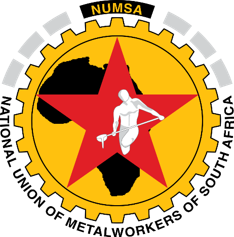Trains off the rails
Several commuters were injured in Tshwane at the beginning of November when a train left the rails and hit commuters on the platform.
Two luxury trains – Blue Train and Trans Karoo from Cape Town – collided recently. 10 commuters sustained serious injuries.
Another Blue Train was involved in a collision in March 2004.
South Africa is where costly and devastating road and rail accidents happen. Just what is the problem?Death rates on the road and railway lines are reportedly ten times higher than most US and European countries. The cost to the economy amounts to more than R13 billion over the last six years according to road agency estimates. Statistics released by the Railroad Association of South Africa show that more than 36 000 people were seriously injured, including 9 000 killed in road and rail traffic accidents since 1999.According to Andre Venter, transport strategist and general manager of the United Associations of South Africa (Uasa), long working hours for train drivers, trains not running to schedule, as well as failures in the signals system and the absence of a back up system to prevent human failure are responsible for the majority of accidents.All these reasons are symptomatic of “a much bigger problem caused by years of lack of investment in rail infrastructure,” Venter said.So why is the country keen to spend more than R20 billion on the Gautrain project when its oldest rail infrastructure network system is in such a state of disrepair, major transport union officials are asking?
What the unions want
Satawu said to achieve this, government should :-
Provide proper funding for public transport. Expand subsidised bus services and make up the backlog in Metrorail funding.
Make integrated public transport planning a reality by urgently establishing the Transport Planning Authorities.
Scrap the bus tendering system and replace it with negotiated contracts with subsidised bus service providers.
Urgently review the wisdom of the Gautrain project from a public transport point of view.
Reverse the trend of privatising of public transport, and review GEAR which has informed such privatisation.
Satawu has called on government to urgently review the Gautrain project. The union said it had learnt that the burden on the central fiscus may be as high as R20bn. Government should take stock and ask itself if the Gautrain is going to make any serious and cost effective contribution to the expansion of public transport services.
Their view has received support from Transport Parliamentary Portfolio Committee chairperson, Jeremy Cronin. He told business magazine Moneyweb that this R20bn is almost five times as much as the R4,67bn that the Committee is presently discussing how to allocate for “all public transport nodes” across the country. While the committee has to grapple with how to serve 6 to 7 million commuters daily, says Cronin, the Gautrain “aims to attract wealthier car owners and is expected to draw just 134 000 one-way journeys a day when it opens.””It is quite clear to Satawu that the appeal of Minister Jeff Radebe and his Transport MECs for more people to use public transport would continue to fall on deaf ears as long as public transport remained under-funded and poorly co-ordinated. Commuters currently use public transport because they have no choice,” Satawu general secretary, Randall Howard said.And while they have no choice, we will just have to come to terms with the “spate of life threatening accidents,” Howard said.He added that the Transport Department should take practical steps so that public transport became the mode of choice. This meant “frequent, reliable, direct, safe and affordable (transport). Currently it is none of these.”
Izitimela ziyaphuma emzileniZizoqhubeka izingozi kuze kufike iskhathi lapho uhulumeni ezohlinzeka khona ngemali yokuxhasa ingqalasizinda yolayini bezitimela efanele. Kanti uma kunezehlakalo ezifana nalesi esisanda kwenzeka sokubheduka kwe-thayifodi (typhoid) eDelmas, iziphathimandla kufanele ziqiniseke ukuthi olayini bokuxhumana zibagcina bevulekile kuleyo miphakathi ethintekile ngazo zonke izikhathi.
Treine van die spoor afTensy die regering ordentlike befondsing vir spoorinfrastruktuur voorsien, sal ongelukke bly gebeur. En wanneer daar krisisse is soos die onlangse maagkoors-epidemie in Delmas, moet owerhede seker maak dat kommunikasie met betrokke gemeenskappe ten alle tye oop geskied.
Diterene di kgelohile seporongHo fihlela mmuso o fana ka thuso ya ditjhelete e tshwanetseng dibopehong tsa motheo tsa diterene, dikotsi di tla nne di be teng. Mme ha ho na le mathata a jwalo ka sewa se sa tswa ba teng sa typhoid mane Delmas, bolaodi bo lokela ho etsa bonnete ba hore bo boloka mehala ya dikgokahano le baahi ba amehileng e butswe ka dinako tsohle.
